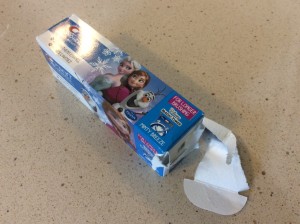3:00am—BEEP BEEP BEEP That was the sound of CCE’s staff waking up to spend the day in D.C. fighting for Long Island Sound restoration and protection funding. We boarded the bus in the early hours of the morning with other Long Island stakeholders, including Coalition to Save Hempstead Harbor, Friends of the Bay, Save the Sound, Construction Industry Council of Westchester & Hudson Valley, Hempstead Harbor Coalition, Town of North Hempstead, Seatuket Harbor Protection Taskforce, The Nature Conservancy, and many more.
We met with Congressman King, Congressman Zeldin, Congressman Suozzi, Congresswoman Delauro, Congresswoman Lowey, Congressman Courtney, Senator Schumer, Senator Blumenthal, and Senator Murphy. Everyone agreed that the Sound was important ecological and economic asset for both NY and CT. It is an extension of our backyard. We have made progress in restoring the Sound but more needs to be done. The president’s misguided budget blueprint completely eliminated funding for the Sound. These crucial federal dollars are leveraged by local, state, regional and private funds to restore habitat, improve wastewater infrastructure, implement green infrastructure, and protect ecologically important wetlands--and they are making big difference for the health of the Sound.
The day was long, yet energizing, as we heard our Senators and House members committing to fight for federal restoration and protection dollars for the Sound. Shortly after our trip, Congress reached an agreement for an interim budget for FY2017 that includes $8 million for the Sound—double what it was last year. This is a HUGE victory!
However, our work is not over yet. The FY 2017 budget will be in place through September, and then Congress will have to pass a budget for FY 2018. The negotiations have already begun for the 2018 budget, and we are again facing an uphill battle. Just as we celebrate our victory for 2017, we are going back to work to advocate for next year's budget. Look for opportunities to get involved, starting with our online petition.


